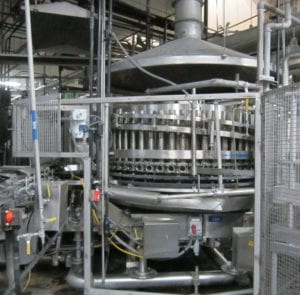
Food and beverage processing equipment isn’t like the equipment in other manufacturing plants. Lubrication is different. Sanitation is on-going. And usage cycles vary — not only from facility to facility, but often within individual facilities, often depending on the agricultural cycle. And awareness of equipment usage cycles is essential for an accurate appraisal. Why? Usage determines Normal Useful Life, a critical value in any equipment appraisal calculation.
Equipment Life Calculations
For instance, in one property tax appeal, we helped a food processing client in Sonoma County markedly reduce taxes by showing that the subject equipment had a much shorter Normal Useful Life than the tax assessor’s estimate. Our report explained that since the equipment ran 24/7 processing fresh prepared foods, it was on the fast track to normal wear and tear (physical deterioration) even with the business’ excellent maintenance program.
Wine Tanks
Wine tanks are another important area in food processing tax appeal cases. Trend tables in California tax assessor manuals indicate that there’s a point at which old winery tanks start increasing in value! If older wine tanks truly were more valuable in the market place than new ones, the winemaking industry would be operating in a very different world! We have been able to successfully explain to tax appeal boards how these equipment types truly behave in the market place, which, as you know and they learn, does not include an increase in value.
Because it’s not unusual for a tax assessor to overestimate the value of equipment, it may be worthwhile for your business to consider a tax appeal as a way to reduce overhead.
Of course we also do appraisals of food processing equipment for other reasons, such as estate, family law, litigation and buy/sell situations.
Capitalizing Installation Costs
In a recent family law situation, where we used both sales comparison approach and cost approach methodology, one puzzle to be solved was determining if all related shipping, installation and taxes had been properly capitalized or if those costs would need to be considered when using the Cost Approach to value the subject assets.
Solving this puzzle started with comparing the equipment list with the accounting records. With the listings reconciled, I used a random number generator to develop a sample of approximately 20 invoices over $10,000. This sample would be used to determine how shipping, installation and taxes had been recorded. Using records for the sample items, the company’s bookkeeper and I determined that staff had performed a significant portion of the installation related to about half of the equipment being appraised; those costs had not been capitalized and would need to be added. It’s not uncommon that some installation costs, etc., are capitalized and some are not. It’s just a matter of sorting out which is which! Once we have the appropriate information, we know what needs to be added and can prepare an accurate appraisal report.
Experience Counts
What’s important in food processing equipment appraisal is understanding the nature of the business, being familiar with the equipment and the processing systems, and knowing what to look for during an inspection. A recent article in CLFP’s News & Views pointed out that food and beverage processing is the third-largest manufacturing industry in California, generating $83 billion to the economy and providing 760,000 jobs. Many of these food manufacturers are in the North Bay, with a concentration in Sonoma County, right in our neighborhood, so it’s no wonder we’re experienced!
If you have questions about how a qualified USPAP equipment and machinery appraisal can help you save money on your ad valorem taxes — or if you have questions about an appraisal for any other reason — give me a call here at the office or fill out our contact form to make a phone appointment. I’m always glad to hear from you.
Jack Young, ASA—MTS/ARM, CPA
NorCal Valuation Inc.




